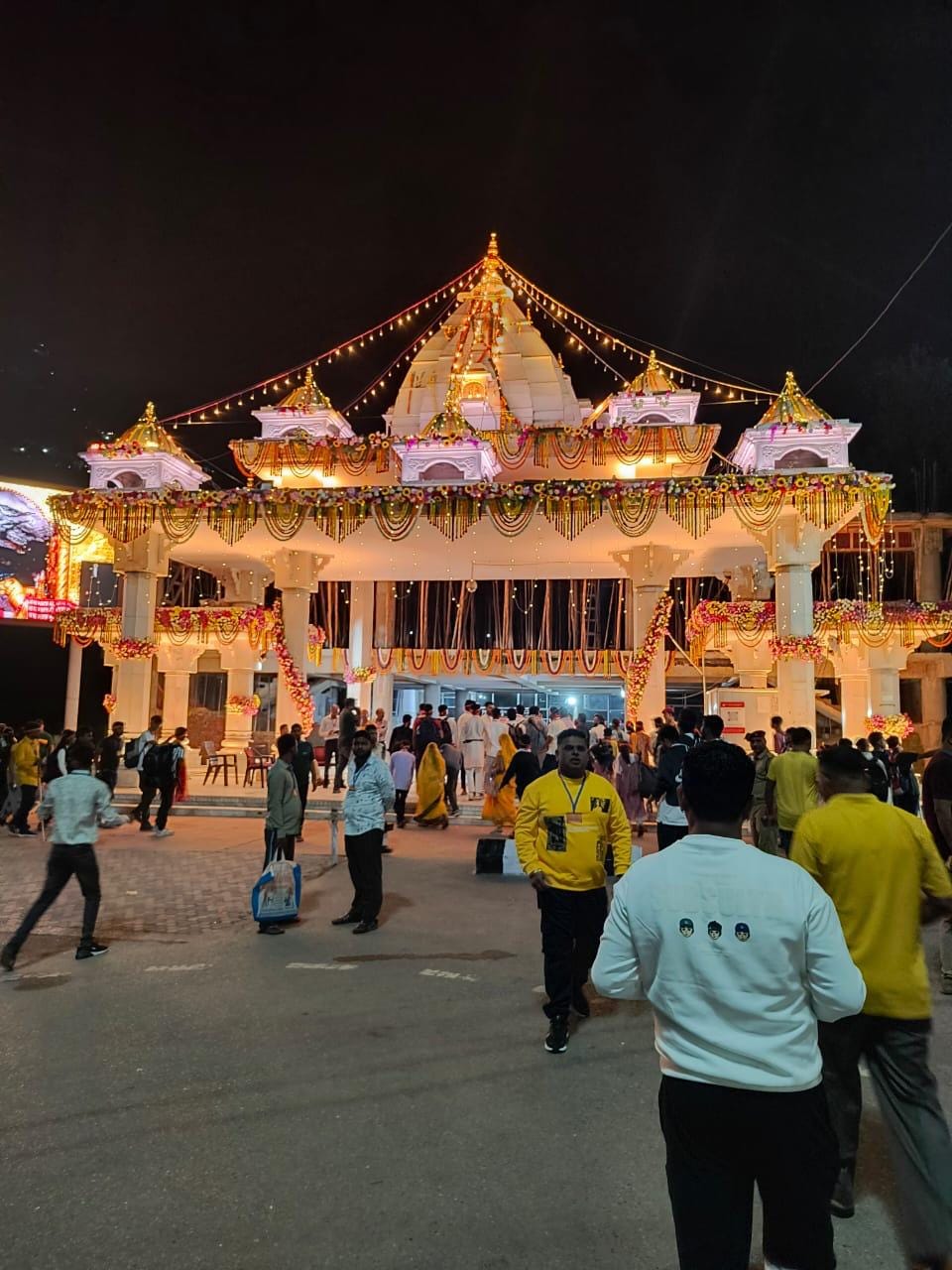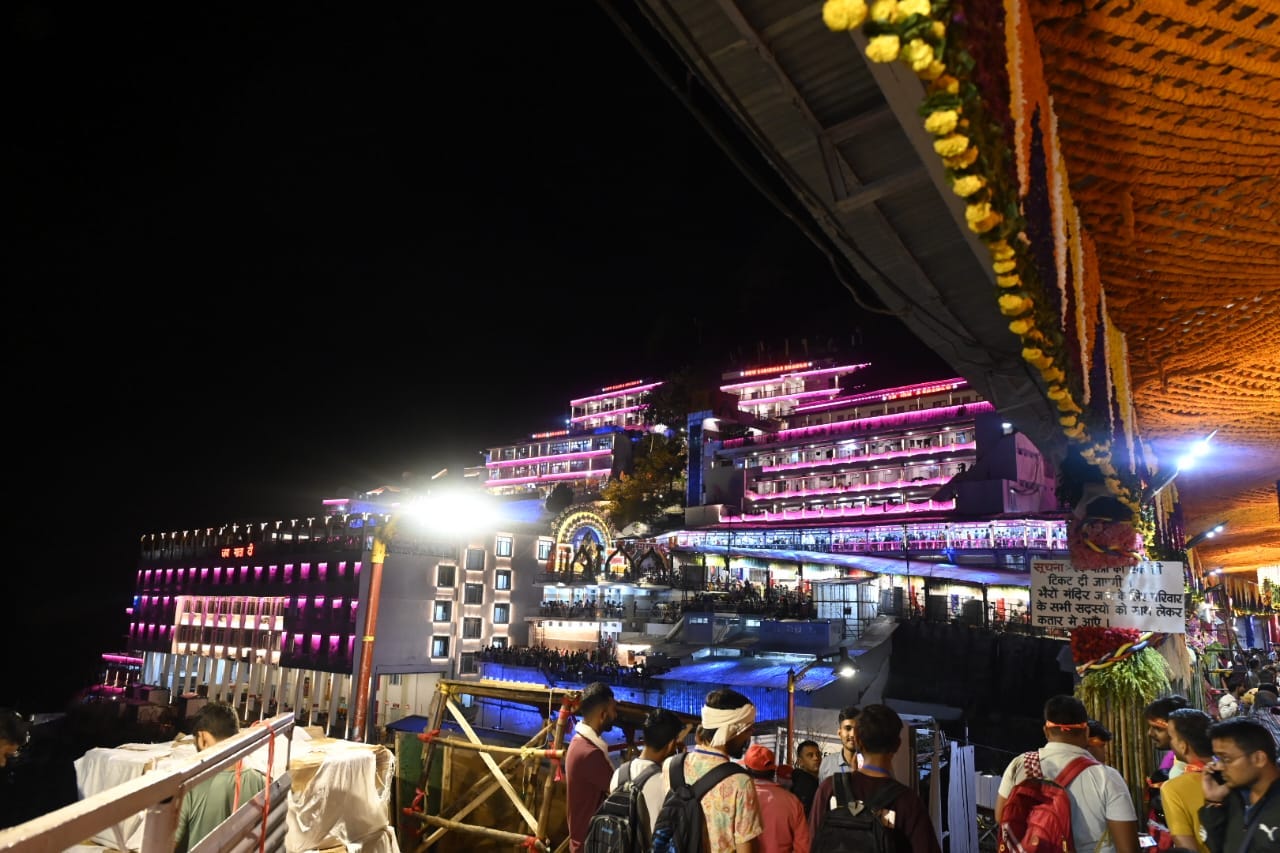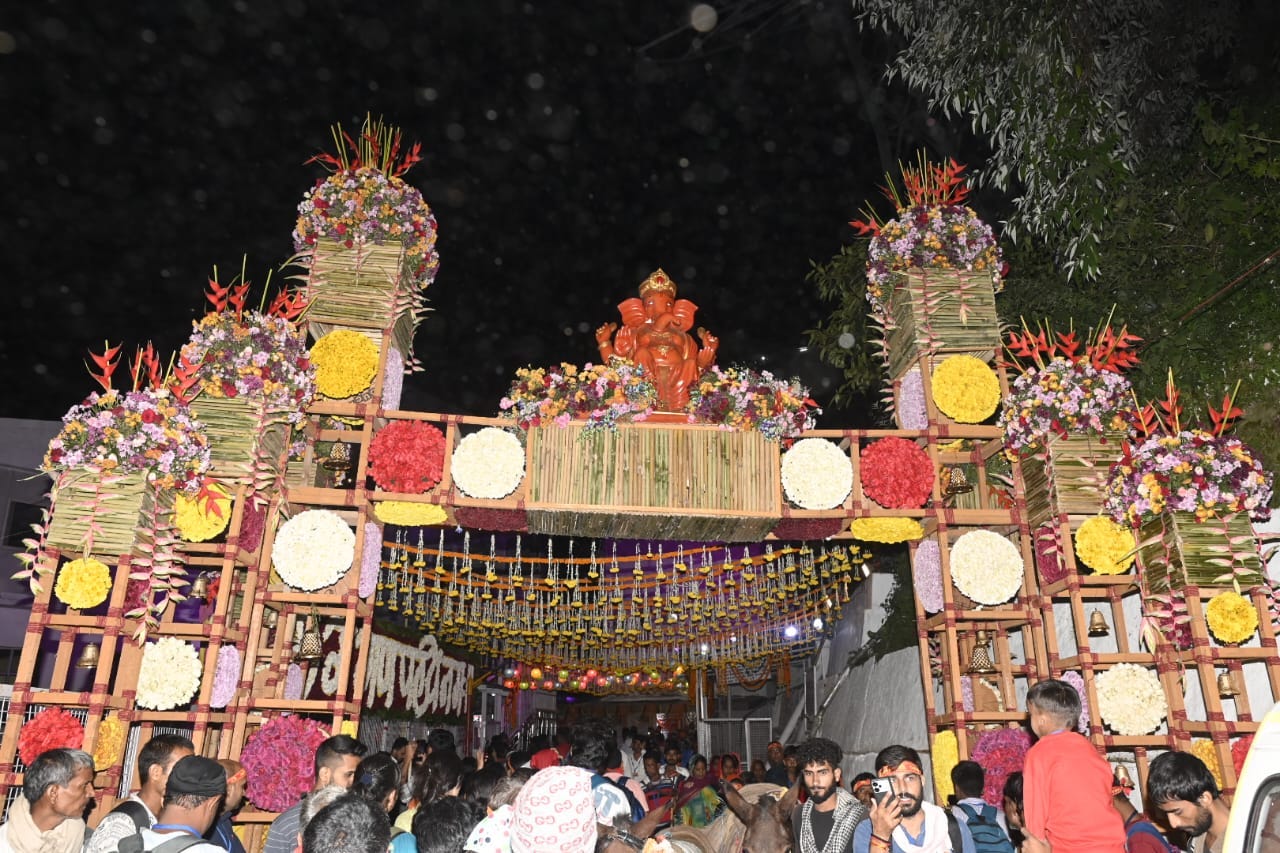Mata Vaishno Devi During Navratras
In the broader context of India's unity and diversity, the Mata Vaishno Devi pilgrimage embodies the nation’s rich cultural and spiritual heritage.
The Significance of Mata Vaishno Devi During Navratras
As we traverse the holy nine days of Navratras, dedicated to the worship of Goddess Durga, it is only appropriate to reflect on one of the most revered shrines associated with the goddess—Mata Vaishno Devi Mandir. Mata Vaishno Devi, a manifestation of Goddess Durga, holds profound significance during this sacred period. Nestled in the Trikuta Mountains of Jammu, India, the shrine becomes a focal point for millions of devotees during both Chaitra (spring) and Shardiya (autumn) Navratri. These nine days are a celebration of the divine feminine power, marked by vibrant decorations and sacred rituals honouring the goddess's blessings, making the shrine a beacon of devotion and spiritual fulfilment.
The Legend of Mata Vaishno Devi
Mata Vaishno Devi, according to Hindu mythology, is believed to be a manifestation of the goddess Durga or Adi Shakti. Born as Trikuta, daughter of the Himalayas, she dedicated her life to merging with Lord Vishnu through deep meditation. Her spiritual journey was interrupted by Bhairon Nath, a tantric who became infatuated with her beauty and pursued her. Fleeing from him, she meditated in a cave at Ardhkuwari for nine months.
When Bhairon Nath finally caught up with her at the entrance of the holy cave, Mata Vaishno Devi transformed into the fierce goddess Mahakali and beheaded him. In his last moments, Bhairon Nath repented for his actions, and in her compassion, Mata Vaishno Devi granted him a boon: pilgrims visiting her shrine would have to visit Bhairon Nath’s temple for their pilgrimage to be complete. This tale is integral to the spiritual experience of the pilgrimage, reflecting the goddess’s boundless power and compassion.
Shrine Discovery and Development
The holy cave of Mata Vaishno Devi is believed to be over a million years old, with references found in ancient texts such as the Mahabharata. However, its modern significance dates back around 700 years, when the shrine was rediscovered by Pandit Shridhar, a devout Brahmin, following a divine vision in a dream. Over the centuries, the shrine's prominence continued to grow, culminating in the establishment of the Shri Mata Vaishno Devi Shrine Board in 1986. This was formalised through the Jammu and Kashmir Shri Mata Vaishno Devi Shrine Act, 1988 (Act No. XVI of 1988), which was retrospectively enforced from August 30, 1986. Significantly, this legislative reform took place during a period of stable governance under both the Governor Jagmohan Malhotra and Chief Minister Dr. Farooq Abdullah, reflecting a collaborative effort to enhance the shrine’s administration while maintaining democratic governance.
The establishment of the Shrine Board marked a significant governance shift, enabling the introduction of modern facilities and improved management of the pilgrimage. This transformation has played a crucial role in accommodating the growing number of pilgrims and enhancing their experience, while preserving the spiritual sanctity of the shrine.
The Pilgrimage Experience
The pilgrimage begins at the base camp in Katra, followed by a 13 km trek to the Bhawan, located at 5,200 feet. As of 2023, over 95 lakh (9.5 million) devotees visited the shrine, making it one of the most visited religious sites in India. Pilgrims can either undertake the challenging trek on foot or avail themselves of various alternatives like ponies, battery-operated vehicles, or helicopter services from Katra to Sanjhichhat, making the shrine accessible to all.
Modern Facilities for Pilgrims
To accommodate the increasing number of devotees, the Shrine Board has introduced several facilities to ensure a smooth and comfortable pilgrimage:
Shelter Sheds and Resting Areas: Shelter sheds have been set up at intervals along the trek to protect pilgrims from rain, sun, and harsh weather. These areas are equipped with seating for rest and refreshment stations.
Bhojanalayas and Refreshment Centres: Several eateries along the route offer affordable meals, including traditional North Indian cuisine, ensuring pilgrims remain nourished and hydrated throughout the journey.
Medical Aid: Medical centres are placed at key points along the trek, providing oxygen cylinders, first aid, and emergency services to assist pilgrims with health concerns.
Cloakrooms and Blanket Stores: Pilgrims can store their belongings securely at cloakrooms and access blankets free of charge to help them stay warm, especially during the colder months.
Travel and Infrastructure
Pilgrims can access the shrine via multiple travel options. Katra is well connected by road and rail, and a helicopter service from Katra to the Sanjhichhat helipad offers a quicker, more convenient way to reach the shrine. For those unable to walk the trek, options like ponies and battery-operated vehicles are available. The recent addition of a skywalk has helped manage crowd control and ease congestion during peak seasons.
Navratri Celebrations at the Shrine
During Navratras, the shrine is lavishly decorated with flowers and lights, adding to the festive atmosphere. The Shrine Board makes special arrangements for the influx of pilgrims, including continuous water and power supply, sanitation facilities, and the provision of special meals for those observing fasts. The Shat Chandi Maha Yagya, a significant ritual performed during Navratri, seeks the blessings of the goddess for peace and prosperity.
Divine Blessings of the Goddess
As we celebrate the sacred Navratras this year from 3rd October to 11th October, may the divine blessings of Mata Vaishno Devi be showered upon all pilgrims, visitors, and tourists alike. The Mata Vaishno Devi shrine remains an enduring symbol of faith, spirituality, and devotion for millions of people across India and beyond. With its profound mythological roots and modern facilities, the shrine continues to offer a deeply enriching and spiritually fulfilling experience, especially during Navratras. The efforts of the Shrine Board ensure that every pilgrim's journey is both comfortable and accessible, allowing them to seek the goddess’s blessings without difficulty.
In the broader context of India's unity and diversity, the Mata Vaishno Devi pilgrimage embodies the nation’s rich cultural and spiritual heritage. People from different regions, languages, and backgrounds come together to honour the goddess, reinforcing the values of national integrity and unity. As pilgrims ascend the sacred path, they contribute to a tapestry of shared devotion, exemplifying the spirit of harmony that binds the diverse yet united fabric of India.
References
Hindustan Times
PTC News






